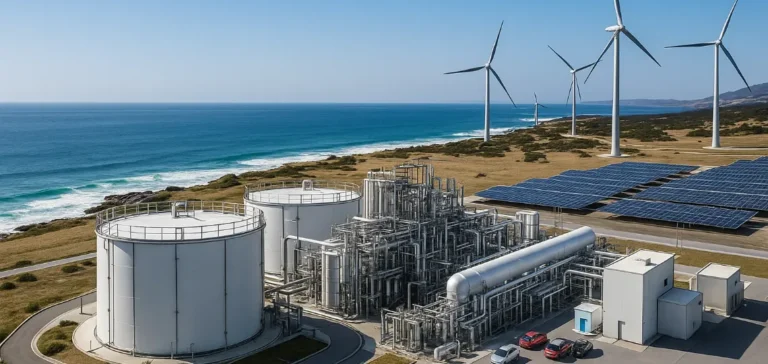Verdagy, a company specialising in hydrogen electrolysis, has signed an agreement with Mainspring Energy Inc. to install a hydrogen-fuelled linear generator at its Moss Landing site in California. The unit is expected to be operational before the end of summer 2025, according to a joint statement released by the two companies on May 28.
An established industrial site
Verdagy’s plant has been operating for four years, accumulating more than 20,000 hours of operation with commercial cells and producing over 200 tonnes of hydrogen. The facility runs continuously, seven days a week, in a fully automated mode, providing Mainspring with a steady supply of hydrogen for electricity generation via its internal combustion generators.
This integrated infrastructure allows Verdagy to sell its hydrogen on-site while also using the electricity generated to power its own electrolysers. The self-consumption model reduces operating costs and enhances production stability.
A partnership focused on energy reliability
The project aims to demonstrate the utility of hydrogen in addressing increasing grid constraints, particularly in areas where energy reliability is critical. Mainspring’s linear generators can operate on multiple fuel types, but this installation will exclusively use locally produced hydrogen.
“This collaboration with Mainspring Energy is a concrete model for flexible, on-site energy solutions,” said Marty Neese, Chief Executive Officer of Verdagy, in a statement.
An industrial-scale demonstrator
Both companies view the project as an industrial showcase of their respective technologies. Shannon Miller, Founder and Chief Executive Officer of Mainspring, highlighted the importance of this initiative for testing the performance of its hydrogen generators under real-world conditions. “This is an opportunity to demonstrate the industrial resilience of our technology,” she said.
The collaboration is based on a co-located hydrogen consumption model, regarded by both parties as a practical solution for critical environments such as data centres or infrastructure sensitive to power interruptions.






















